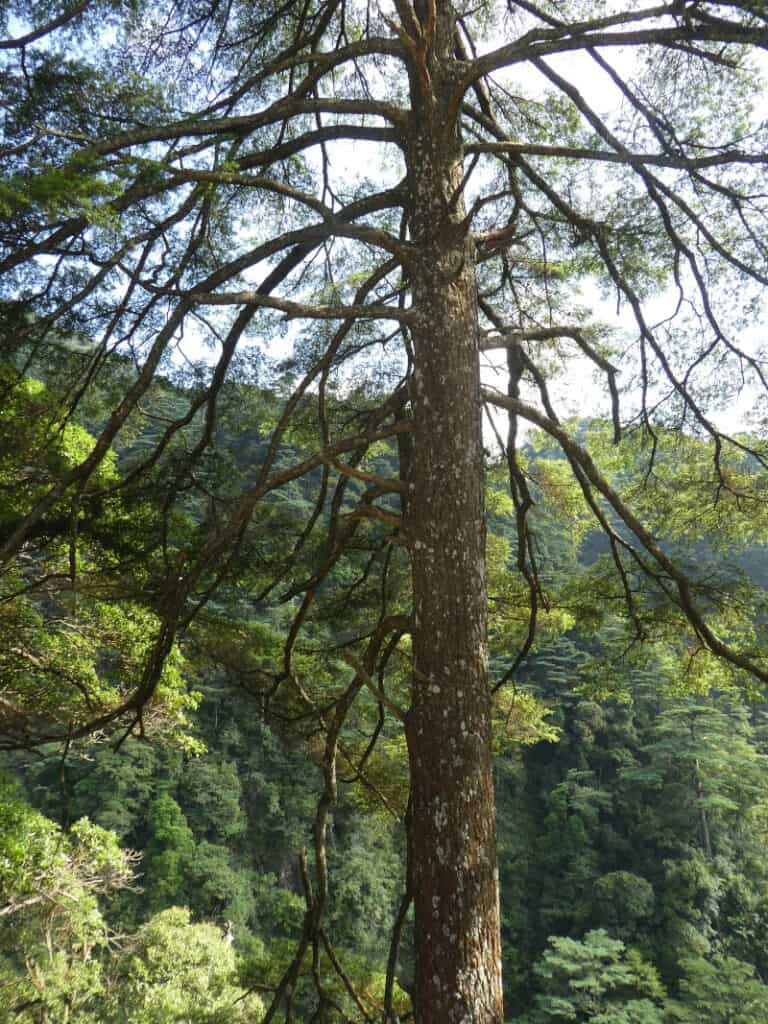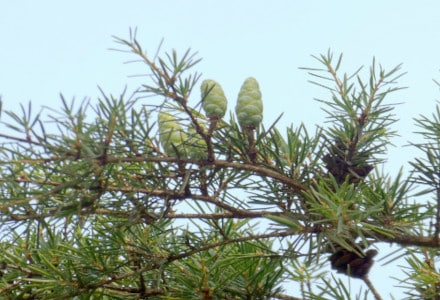
Bristlecone Hemlock Facts
- This masterpiece of Nature and evolution most frequently goes by the deceptive common name of the Bristlecone Hemlock. For the moment, the remarkable tree has no other broadly accepted general name. Though that’s not unknown, it’s uncommon.
- Among scientific professionals, though, the plant remains better known by its official title. That’s a somewhat hard to pronounce term for the layman, however. That’s because it bears the cumbersome technical name of the Nothotsuga longibracteta.
- It received that name due to the efforts of two noted researchers. They were Hu Xiansu and Christopher Nigel Page. They achieved the first formal acknowledgement of the plant as a separate and distinct species. This only occurred in the year 1989.
- Regardless of which term one chooses to use when referring to it, the flora remains an impressive species. It also stands out from the majority of similar plants. That’s due to the fact that it currently represents the only known member of its genus.
- Sadly, the fabulous Bristlecone Hemlock appears to be steadily declining in numbers. This unfortunate situation further seems to hold true throughout its native range. The IUCN therefore presently lists this botanical marvel as Near Threatened.
- Given its present situation, it understandably faces various threats to its continued existence. The most pressing one for the moment continues to come from ongoing deforestation. The ongoing effects of climate change, however, also now pose a danger.
Related Articles
Bristlecone Hemlock Physical Description
The remarkable Bristlecone Hemlock is a variety of tree that captivates many who encounter it. It also does so due to more than just one reason. Yes, it’s a visually appealing product of Nature, to be certain. Yet the species also attains a fully respectable physical size.
Individuals specimens reach a maximum known height of approximately 98.4 ft (30 m). The trunk further tends to grow relatively straight in most cases. The bark covering this part of the tree manifests a dark brown in color. It also displays deep longitudinal fissures.
Extending out from this, the branches develop as comparatively thin in nature. These also develop in varying shades of brownish yellow or reddish brown when young. As the individual ages, though, this changes to shades of brownish gray or dark brown.
The foliage of the Bristlecone Hemlock also merits attention. These evolved as evergreen in nature. Their flat, needle-like structure averages 0.5 – 1.5 in (1.2 – 4 cm) in length. The diameter of these leaves additionally only ranges from 0.04 – 0.08 in (1 – 2 mm).
It’s the seed cones of the tree that likely garner the most attention, however. These average just 1 -2 in (2.5 – 5 cm) in lenght. Despite their tiny size, though, they display a striking tendency. That’s because they develop as fully vertical and erect in relation to the branch.
- Kingdom: Plantae
- Phylum: Pinophyta
- Class: Pinopsida
- Order: Pinales
- Family: Pinaceae
- Genus: Nothotsuga
- Species: N. longibracteta
Bristlecone Hemlock Distribution, Habitat, and Ecology
Though limited, the zone of habitation of the Bristlecone Hemlock isn’t surprising. That’s due to the fact that it evolved as native to a region of the globe renowned for its natural splendor. It’s currently unknown if the evergreen ever appeared beyond this range.
It’s found only in a very small portion of the continent of Asia. That happens to place it within the boundaries of the country of China. Even there, though, it only appears in a few regions. Those are the provinces of Hunan, Guizhou, Guangdong, and Fujian.
Further complicating its situation is the fact that it has very specific habitat requirements. Part of this is its need for relatively acidic soil. It also requires a cool, humid, and temperate climate, with abundant rainfall. The same native locale also features frequent, dense fog.
The marvel of Nature also makes its home on low or moderately high mountains in this range. The species, however, thrive well at a respectable range of altitudes. Due to this flexibility, concentrations appear at altitudes ranging from 984 – 6,234 ft (300 – 1,900 m).
The fascinating Bristlecone Hemlock achieves pollination through the actions of a wide range of local insect species. Seed cones develop, and present as red or purplish at first. As these mature, they change to a dark brown shade. Pollination occurs from march to April.
Intriguingly, these specially evolved structures typically persist on the tree for several years. When fully mature, the cones spread the seeds within them in one of two very different ways. Some break off from the tree whole, while others disintegrate completely on the tree.
Species Sharinf Its Range
Check out our other articles on Africa’s Many Geological Masterpieces, Common Bottlenose Dolphin, Mount Kinabalu, Eastern Tiger Swallowtail, Black Mamba

